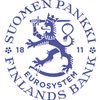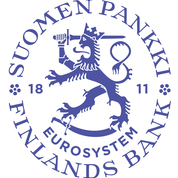Russia's war in Ukraine is stifling Finland’s economic recovery

Russia’s war in Ukraine is weakening the outlook for the Finnish economy. Finland’s economic growth was in full swing before the war started, and this serves as a good foundation for the full year’s growth. According to the Bank of Finland's June forecast, the Finnish economy will grow by 1.7% in 2022, but growth will slow to 0.5% in 2023. In 2024 growth will pick up to 1.5%.
Inflation has risen significantly. The war is spurring further growth in energy prices, and the availability of goods has worsened. Services will become more expensive as goods price inflation is passed on to service prices. Consumer prices are projected to rise by 5.6% in 2022. “Supply chain bottlenecks and high raw material prices are pushing up inflation. Inflation is projected to slow next year as the impact of energy prices subsides and supply chain disruptions are expected to ease,” says Bank of Finland Head of Forecasting Meri Obstbaum.
Foreign trade with Russia is collapsing as a result of the war, and higher uncertainty and inflation are weakening the prospects for consumption and investment. “Cost-competitiveness will play an important role in how companies are able to adjust as they try to find new markets to make up for lost business in Russia. If they do not succeed in this, the risk of a recession will grow,”’ says Obstbaum.
Uncertainty surrounding the world economy is present in the forecast for the Finnish economy. In addition to geopolitical risks, uncertainty is being stoked by the continuation of the pandemic and the risk that growth in China may slow more rapidly than expected. “The investment boom that appeared to be on the horizon has been dashed by uncertainty. Factors deterring investment also include the shortages of materials and components faced by companies as well as rising prices and interest rates,” says Obstbaum.
The uncertain economic outlook and rising prices are curtailing household consumption. “Finnish household sentiment about their personal finances and the national economy both slumped to record lows this spring. As a result of the high inflation, households will still see their purchasing power decline this year,” says Obstbaum. On the other hand, households have accumulated a considerable amount of savings during the pandemic which they might choose to spend to make up for the loss in purchasing power.
Finland’s public finances were weakened by the pandemic, and Russia’s invasion of Ukraine has created new public spending needs. The general government deficit relative to GDP will shrink somewhat in the coming years, but the public finances will remain in deficit and the debt ratio will begin to edge upwards again.
The risks surrounding the forecast are clearly on the downside. The forecast assumes that uncertainty generated by the war will fade over time. Production and supply chain bottlenecks are expected to gradually ease. The trajectory of Russia’s war in Ukraine is, of course, impossible to predict accurately. Growth in the Finnish economy may fall short of the forecast, especially if disruptions in the availability of commodities and goods persist and price pressures fail to subside. In the worst case scenario, the entire euro area may fall into recession.
Keywords
Images
Links
About Suomen Pankki
The Bank of Finland is the national monetary authority and central bank of Finland. At the same time, it is also a part of the Eurosystem, which is responsible for monetary policy and other central bank tasks in the euro area and administers use of the world’s second largest currency – the euro.
Subscribe to releases from Suomen Pankki
Subscribe to all the latest releases from Suomen Pankki by registering your e-mail address below. You can unsubscribe at any time.
Latest releases from Suomen Pankki
March 2024 sees modest level of corporate loan drawdowns29.4.2024 10:00:00 EEST | Press release
In March 2024, non-financial corporations (excl. housing corporations) drew down new loans1 from banks operating in Finland to a total of EUR 1.1 billion – the smallest amount in March since 2011. The average interest rate on new corporate loans fell slightly from February 20204, to 5.55% in March. Nearly half of the new corporate loans were taken out by companies in the sectors with the largest amounts of outstanding loans, namely real estate and manufacturing companies. Real estate companies took out 24% of the loans, at an average interest rate of 5.01%. Manufacturing companies took out 21%, at an average interest rate of 5.86%. The average interest rates on new loans to non-financial corporations rose in March 2024 only in the category of small loans of up to EUR 250,000. In this loan category, the average interest rose by 0.29 percentage points from February, to 6.13%. The average interest on medium-sized loans (over EUR 250,000 and up to EUR 1 million) was 5.78%, remaining almost
Svag efterfrågan på företagslån i mars 202429.4.2024 10:00:00 EEST | Tiedote
I mars 2024 utbetalades nya företagslån1 (exkl. bostadsbolag) av banker med verksamhet i Finland för 1,1 miljarder euro, vilket är det minsta statistikförda utbetalningsbeloppet för mars sedan 2011. Genomsnittsräntan på nya företagslån var i mars 5,55 %, dvs. något lägre än i februari 2024. Företagen inom branscherna med den största lånestocken, dvs. fastighets- och industrisektorn, lyfte nästan hälften av de nya företagslånen i mars 2024. Andelen lån till företag inom fastighetssektorn var 24 % och genomsnittsräntan 5,01 % medan andelen lån till företag inom industrisektorn var 21 % och genomsnittsräntan 5,86 %. Genomsnittsräntan på nya företagslån steg endast i kategorin för små lån på under 250 000 euro. Genomsnittsräntan på små lån steg med 0,29 procentenheter från februari och var 6,13 % i mars 2024. Samtidigt var genomsnittsräntan på medelstora lån (över 250 000 och högst 1 miljon euro) 5,78 %, dvs. nästan densamma som i februari. I mars 2024 sjönk genomsnittsräntan (5,34 %) ocks
Yrityslainoja nostettiin niukasti maaliskuussa 202429.4.2024 10:00:00 EEST | Tiedote
Maaliskuussa 2024 uusia yrityslainoja1 (pl. asuntoyhteisöt) nostettiin Suomessa toimivista pankeista 1,1 mrd. euron edestä, mikä on pienin tilastoitu maaliskuun nostomäärä vuodesta 2011 alkaen. Maaliskuussa uusien yrityslainojen keskikorko oli 5,55 % eli hieman alhaisempi kuin helmikuussa 2024. Lainakannaltaan suurimpien toimialojen eli kiinteistö- ja teollisuusalan yritykset nostivat lähes puolet uusista yrityslainoista maaliskuussa 2024. Kiinteistöalan yritysten nostamien lainojen osuus oli 24 % ja niiden keskikorko 5,01 %. Vastaavasti teollisuustoimialan yritysten nostamien lainojen osuus oli 21 % ja niiden keskikorko 5,86 %. Uusien yrityslainojen keskikorot nousivat ainoastaan pienten eli alle 250 000 euron lainojen luokassa. Pienten lainojen keskikorko nousi 0,29 prosenttiyksikköä helmikuusta ja oli 6,13 % maaliskuussa 2024. Vastaavasti keskisuurten (yli 250 000 ja enintään 1 milj. euroa) lainojen keskikorko oli 5,78 % eli lähes sama kuin helmikuussa. Maaliskuussa 2024 myös suurte
BOFIT Forecast for China 2024–2026: Productivity gains key to China maintaining growth22.4.2024 13:04:52 EEST | Press release
The latest forecast from BOFIT, the Bank of Finland’s Institute for Emerging Economies, sees structural and cyclical factors bringing down economic growth over coming years. Growth is expected to slow to roughly 4 % this year and then to 3 % p.a. in 2025 and 2026. The lack of reliable Chinese statistical data makes detailed assessment of the situation challenging. China’s official figures show GDP rose by 5.2 % last year. Alternative calculations by BOFIT, however, suggest that GDP growth has underperformed official estimates in recent years. Economic growth in the first months of this year was fairly brisk (officially 5.3 % in the first quarter) thanks to strong industrial growth. No large changes to the outlook for economy overall have occurred since our October 2023 forecast. We continue to anticipate about 4 % growth this year. Growth is expected to slow to around 3 % in 2025 and 2026. The degraded quality of Chinese statistical reporting makes it increasingly difficult to evaluate
BOFITs prognos om utvecklingen av den kinesiska ekonomin för 2024–2026: för att upprätthålla den ekonomiska utvecklingen i Kina behövs ökad produktivitet22.4.2024 13:04:44 EEST | Tiedote
Finlands Banks forskningsinstitut för tillväxtmarknader förutspår en avmattning i den ekonomiska tillväxten i Kina under de närmaste åren på grund av både strukturella och cykliska faktorer. I år väntas tillväxten vara ca 4 % och stanna kring 3 % under 2025–2026. De statistiska problemen i Kina försvårar bedömningen av det ekonomiska läget. BNP-tillväxten i Kina var i fjol 5,2 % enligt den officiella statistiken. BOFIT bedömer att landets faktiska ekonomiska tillväxt under de senaste åren varit något långsammare än vad som anges officiellt. Den ekonomiska utvecklingen i början av året har varit relativt stark, pådriven av industrin, men ingen större förändring har skett i den samlade bilden av ekonomin i förhållande till den föregående prognosen. Enligt BOFITs prognos växer den kinesiska ekonomin ca 4 % i år, medan den ekonomiska tillväxten under 2025–2026 förutspås stanna kring 3 %. Kvaliteten på statistiken har delvis försämrats ytterligare, vilket försvårar bedömningen av det ekonom
In our pressroom you can read all our latest releases, find our press contacts, images, documents and other relevant information about us.
Visit our pressroom

